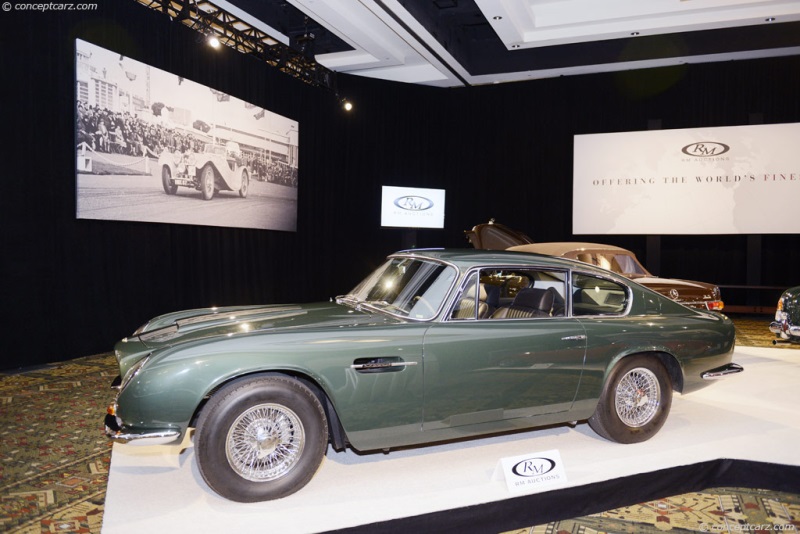Aston Martin introduced its DB4 model in 1958, the first of a line that culminated in the DB6 built between 1965 and 1969. General manager John Wyer had the DB4 styled in Italy, rather than by the works, and the commission was executed by Touring of Milan. Aston Martin's chief engineer, Harold Beah, created the platform chassis, while the new twin overhead camshaft engine was the work of his colleague, Tadek Marek, and race-tested in the DBR2 before its production debut in the DB4. The arrival of the DB5 in 1963 brought an increase in engine capacity, with its bore growing from 92 to 96mm, and displacement from 3.7 to 4.0-liters. This engine was carried over to the DB6 for 1966. With triple SU carburetors installed, the engine developed 282 horsepower, rising to 352 horsepower in Vantage specification on triple Webers. Borg-Warner automatic transmission was offered alongside the standard ZF five-speed manual gearbox, and for the first time, power-assisted steering was an option.
Coupe
Chassis #: 4307/R
Engine #: 400/4724/VC
View info and history
Auction entries : 1The Aston Martin DB 2/4 Mark III, the predecessor to the DB4, rested on a 99-inch wheelbase platform and was powered by a 2.9-liter Lagonda inline-6 and in standard configuration (with twin SU carburetors), developed 178 horsepower. Girling disc brakes and a Laycock-de Normanville overdrive system were optional, and a hydraulically operated clutch was a new feature. The live axle rear setup and the worm-and-sector steering were from the Mark II. Body styles included a hatchback, two-seater coupe, and a 'drophead coupe' convertible. Production lasted from 1957 through 1959 with a total of 551 examples built.The wheelbase of the DB4 was an inch shorter than its predecessor, its overall length was five inches longer, and it was an inch taller. Servo-assisted disc brakes were standard, with the early 11.5-inch Dunlop units later replaced by Girlings. The Marek-designed double overhead camshaft straight-6 engine displaced 3,670cc and its cylinder head and block were cast from R.R. 50 aluminum alloy. With twin-Su carburetors installed, it offered 240 horsepower, over sixty more horsepower than the previous engine. The suspension used a live rear axle with coil springs and a Watt's linkage, while the front was independent with ball-jointed wishbones and coil springs. The steering now used a rack-and-pinion arrangement. Body styles included a 2+2 coupe, 2-seater coupe, and a 2+2 drophead. The design was courtesy of Carrozzeria Touring and the production of the DB4 lasted from 1958 through 1963 with 1,204 examples built during that time (including DB4 GT and GT Zagato). The Aston Martin DB5 arrived in 1963 and came with the enlarged 4.0-liter engine backed by a new ZF five-speed transmission. A three-speed Borg-Warner DG automatic transmission was optional. Standard accouterments included electric windows, twin fuel tanks, wool pile carpeting, reclining seats, full leather trim in the cabin, and chrome wire wheels. Of the 1,059 examples built from 1963 through 1965, 13 were two-door shooting brakes by Harold Radford, 123 were convertibles (drop heads), and the remainder were 2-door 2+2 coupés. The Aston Martin DB6
Aston Martin introduced the DB6 in 1965 at the London and Paris Motor Shows and its wheelbase and length had been increased slightly, by 3.5-inches and 2.9-inches respectively. Its design resembled the DB5 even though the DB6 abandoned its predecessors' Touring-designed Superleggera body framework, adopting a conventional steel fabrication clad, as previously, in aluminum panels. With the slightly larger platform and changes to the construction techniques, the DB6 weighed just 17 pounds heavier than the DB5.
Coupe
Chassis #: DB6MK2/4214/LC
Engine #: 400/4536/VC
View info and history
Auction entries : 4The DB6 had a raised roofline, reshaped rear quarter windows, and a more-raked windscreen. The tail-lamp clusters were revised, quarter-bumpers at each corner, and an oil-cooler air scoop resided low on the front valance. The opening front quarter-lights made a re-appearance while the rear-end sported a Kamm tail offering improved aerodynamics. Wind tunnel testing, which began in February 1965 on the development car, registered 4 YMC, revealed aerodynamic life which resulted in reduced rear-wheel traction at higher speeds. This issue was resolved with the rear lip-spoiler, abbreviated Kammback tail, the lengthened wheelbase, and the relocation of the rear axle. Aston Martin explored the use of a de Dion rear axle but ultimately reverted back to the live-axle configuration with high-tech Armstrong Selectaride cockpit-adjustable rear shock absorbers as available on the DB5.The ZF five-speed manual transmission was standard while the BorgWarner three-speed automatic was a 'no-cost extra.' Power steering and air conditioning were optional, as was the Vantage specification which continued to use triple side-draft Weber 45DCOE carburetors bringing output to 325 horsepower (compared to 314 bhp of the DB5). The standard engine configuration of the 3,995cc unit breathed through triple SU carburetors with 282 horsepower at 5,500 RPM. The standard setup had 8.9:1 compression while the Vantage specification used 9.4:1 compression. 
Coupe
Chassis #: 4307/R
Engine #: 400/4724/VC
View info and history
Auction entries : 1Body styles included a two-door coupé with 2+2 seating and a Volante four-seat convertible. The Volante was introduced in 1966 at the London Motor Show and replaced the previous Volantes which were built atop the DB5 chassis (known as 'short chassis' Volantes). Approximately six or seven examples were built as Shooting-brakes by British coachbuilder Harold Radford, with three additional examples by FLM Panelcraft. The Aston Martin DB6 Mark II Aston Martin announced the DB6 Mark II on August 21st of 1969 with several new features, many of which were later used on its successor, the DBS. The Mark II received flared wheel arches and wider tires on 1/2-inch wider wheels. Power-assisted steering was standard and an AE Brico electronic fuel-injection system with a higher compression ratio cylinder head was offered as optional equipment. The previous Borg & Beck clutch plate was replaced with a 10.5-inch version. Production
During the five years of DB6 production, from 1965 to 1970, a total of 1,788 examples were built. Approximately 140 examples were the DB6-based Mark I Volantes, including 29 with the Vantage specification. An additional 38 examples were Mark II Volantes.
Coupe
Chassis #: 4307/R
Engine #: 400/4724/VC
View info and history
Auction entries : 1Compared to the DB4 and DB5, the DB6 had more room for rear passengers, making it better suited as a 'family man's car,' and helping it sell better than the earlier models in the series. The slightly higher roofline and aerodynamically efficient abbreviated 'Kamm' tail gave it a unique appearance. The arrival of the DB6 Volante convertible marked the first occasion that this evocative name had been applied to a soft-top Aston Martin. The stylish Volante offered four-seat accommodation and was luxuriously appointed with deep-pile carpets, leather upholstery, and an electrically operated hood.The Aston Martin DBS
The Aston Martin DBS was introduced in 1967, meaning that it was alongside the DB6 for three years. It was built until 1972 when it was eventually phased out and replaced by the Aston Martin V8. WIth its 102.8-inch wheelbase and length of 180.3-inches, the DBS was larger than the DB6, offering four full-sized seats, and powered by the same 4.0-liter engine. The standard output was 280 bhp while the Vantage specification offered 325 horsepower. The vehicle's design was courtesy of William Towns and incorporated a fastback style rear end with a squared-off front grille. The DBS was the final Aston Martin to be developed under David Brown's control, and during its production lifespan, a total of 787 examples were built.
by Daniel Vaughan | Apr 2022
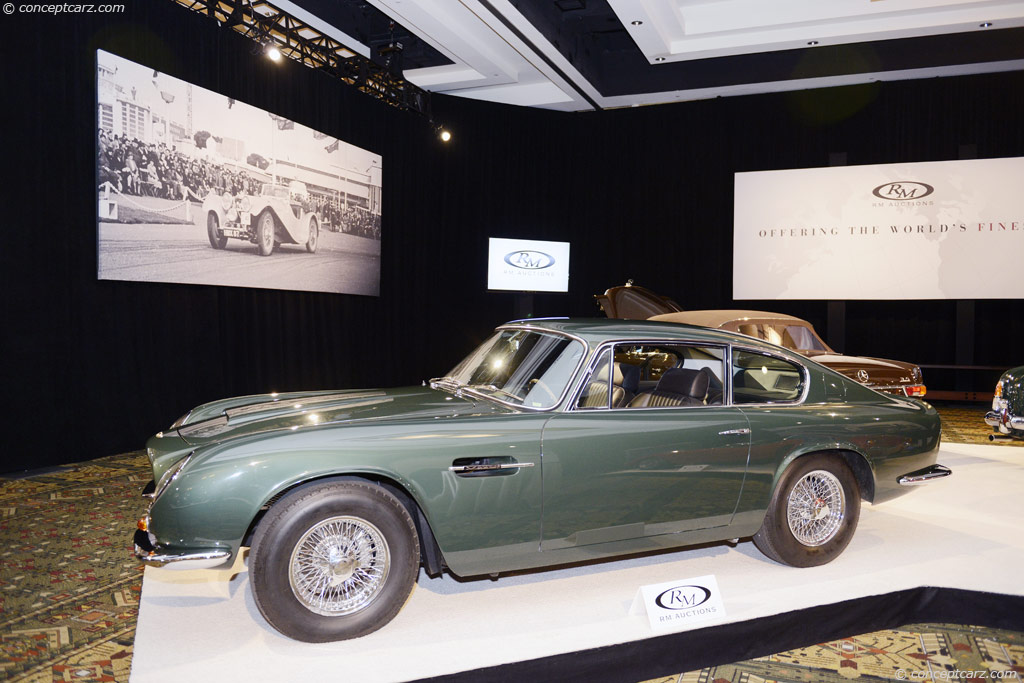
Coupe
Chassis #: 4307/R
Engine #: 400/4724/VC
View info and history
Auction entries : 1
Aston Martin introduced the DB6 in 1965 at the London and Paris Motor Shows and its wheelbase and length had been increased slightly, by 3.5-inches and 2.9-inches respectively. Its design resembled the DB5 even though the DB6 abandoned its predecessors' Touring-designed Superleggera body framework, adopting a conventional steel fabrication clad, as previously, in aluminum panels. With the slightly larger platform and changes to the construction techniques, the DB6 weighed just 17 pounds heavier than the DB5.
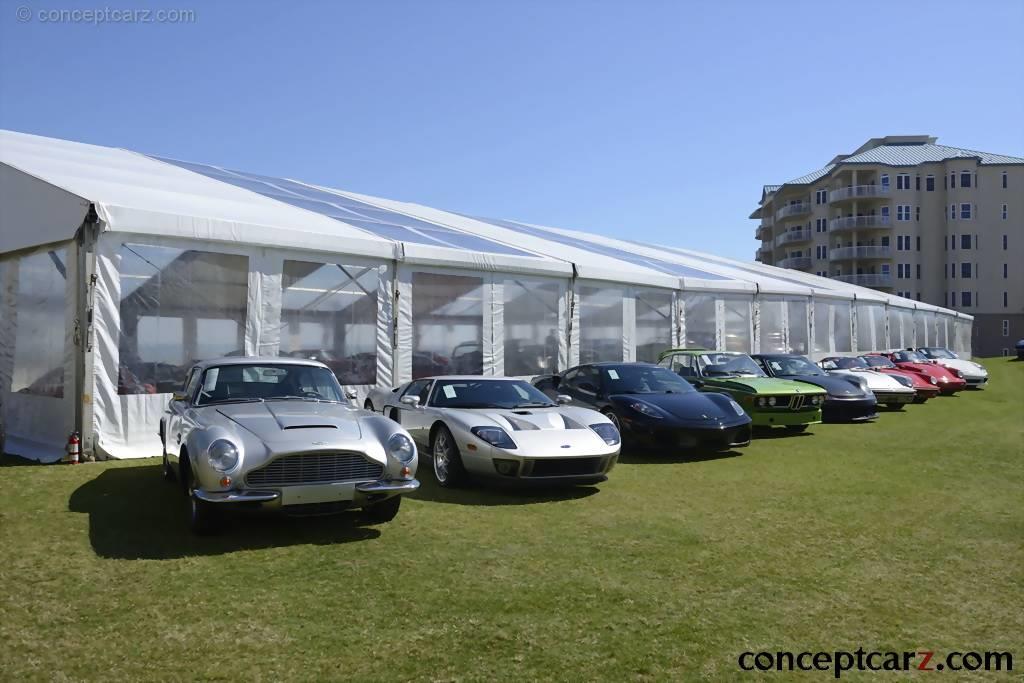
Coupe
Chassis #: DB6MK2/4214/LC
Engine #: 400/4536/VC
View info and history
Auction entries : 4
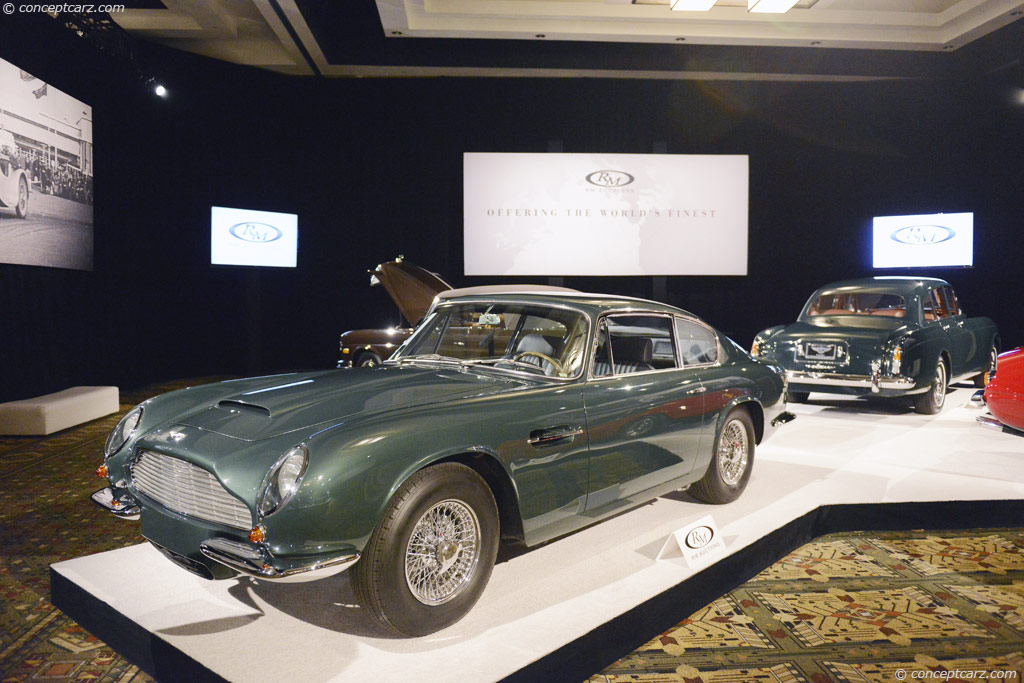
Coupe
Chassis #: 4307/R
Engine #: 400/4724/VC
View info and history
Auction entries : 1
During the five years of DB6 production, from 1965 to 1970, a total of 1,788 examples were built. Approximately 140 examples were the DB6-based Mark I Volantes, including 29 with the Vantage specification. An additional 38 examples were Mark II Volantes.
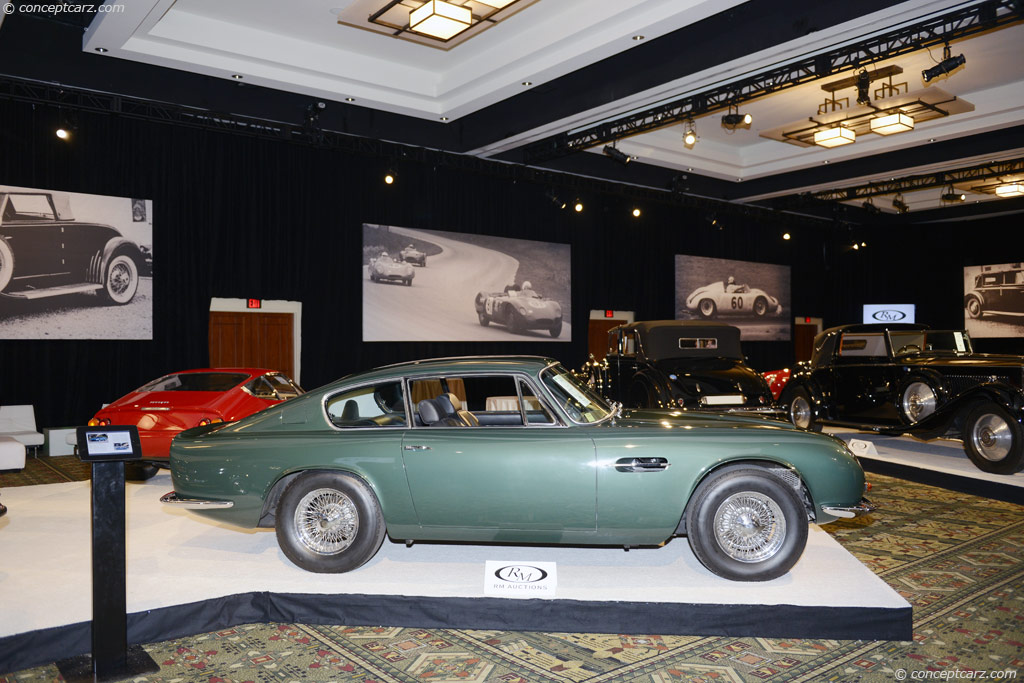
Coupe
Chassis #: 4307/R
Engine #: 400/4724/VC
View info and history
Auction entries : 1
The Aston Martin DBS was introduced in 1967, meaning that it was alongside the DB6 for three years. It was built until 1972 when it was eventually phased out and replaced by the Aston Martin V8. WIth its 102.8-inch wheelbase and length of 180.3-inches, the DBS was larger than the DB6, offering four full-sized seats, and powered by the same 4.0-liter engine. The standard output was 280 bhp while the Vantage specification offered 325 horsepower. The vehicle's design was courtesy of William Towns and incorporated a fastback style rear end with a squared-off front grille. The DBS was the final Aston Martin to be developed under David Brown's control, and during its production lifespan, a total of 787 examples were built.
by Daniel Vaughan | Apr 2022
Related Reading : Aston Martin DB6 History
Robert Bamford and Lionel Martin created the Aston Martin Company in 1913 for the sole purpose of racing. They built a car that sat atop an Isotta-Fraschini chassis. The name of the company was in honor to the Aston Clinton Hillclimb race combined with Lionel Martins surname. After World War One they created their own cars which quickly gained a reputation for reliability and speed by setting many....
Continue Reading >>
Continue Reading >>
Aston Martin
Similar Automakers
Similarly Sized Vehicles
from 1970
1970 Aston Martin DB6 Vehicle Profiles
Recent Vehicle Additions
Performance and Specification Comparison
DB6 Specification Comparison by Year
Year
Production
Wheelbase
Engine
Prices
Related Automotive News
Aston Martin Works marks 50 years of V8 greatness
The heritage home of the marque, Aston Martin Works, is celebrating the golden jubilee of one of its greatest bloodlines – the Aston Martin V8
1972 saw the arrival of the restyled AM V8, which went on to become a signature look for the firms spor...

Celebrating 20 years of V12 Vanquish – a modern classic
Two decades on, the highly desirable V12 Vanquish remains a seminal car for the Aston Martin marque
This cutting-edge Newport Pagnell-built model was, at the time, the most advanced yet to wear an Aston Martin badge
Drive-by-wire throttle and F1©...

Gooding & Company Unveils Online Catalogue for Pebble Beach Auctions, Announces Additional Star Consignments
The catalogue features major new additions from the auction house, including a 1959 Ferrari 250 GT LWB California Spider Competizione, a 1998 Mercedes-Benz AMG CLK GTR Strassenversion, a 1957 Maserati 200 SI, and a 1961 Aston Martin DB4 GT.
The...

RM Sotheby's Presents Highly Original Aston Martin DB3S Works at Monterey Auction
SECOND WORKS CAR, CAMPAIGNED BY MOTORSPORT HERO PETER COLLINS
DB3S WORKS JOINS LIST OF STUNNING MODELS THROUGH THE DECADES SET FOR AN EVENING WITH ASTON MARTIN ON 15 AUGUST
RM Sothebys offers highly original and matching numbers 1953...

FIRST-EVER SPORTS CAR AMONG EXTRAORDINARY LINE UP FOR BONHAMS' BOND STREET SALE
The worlds first sports car – the Prince Henry Vauxhall leads Bonhams Bond St Sale
The original supercar – the iconic 1957 Mercedes-Benz 300 SL Roadster
James Bond Aston Martin DB5 with two-owner faultless records
One of the first Maserat...


















